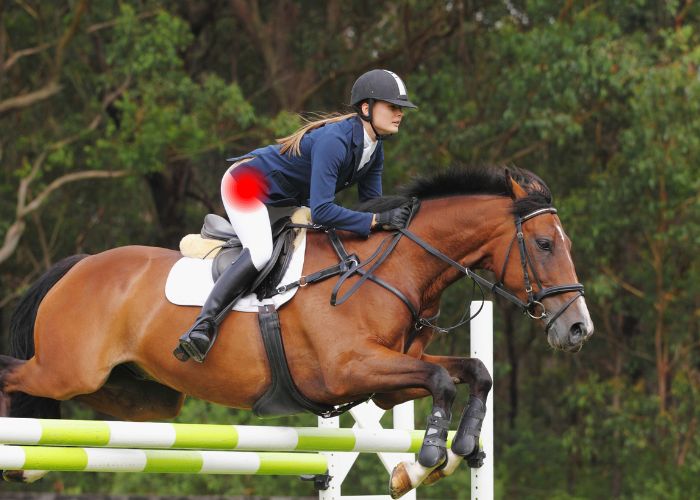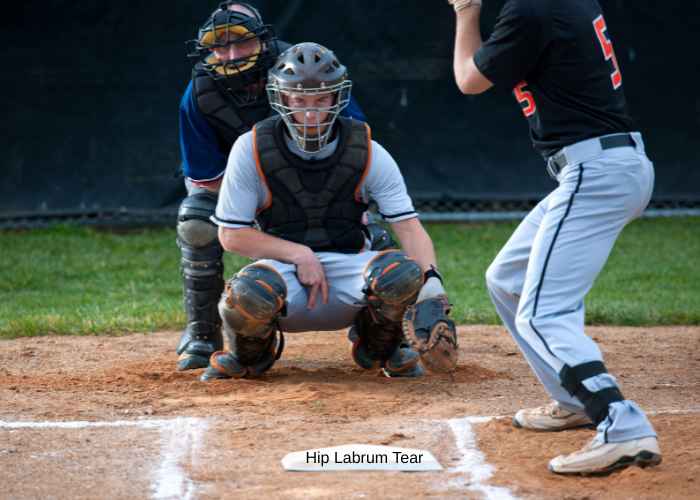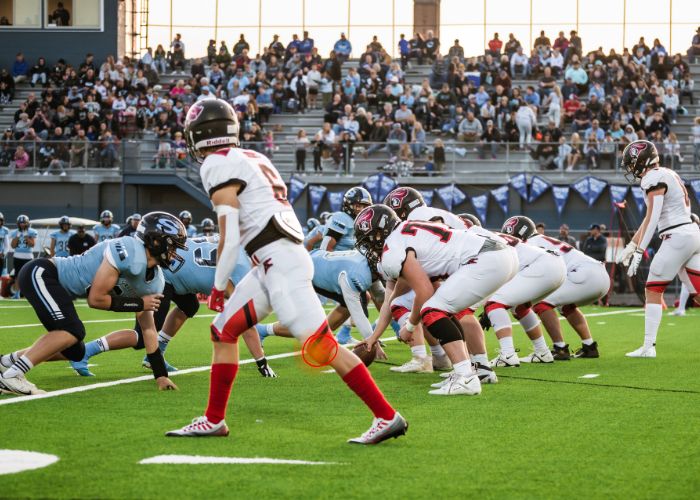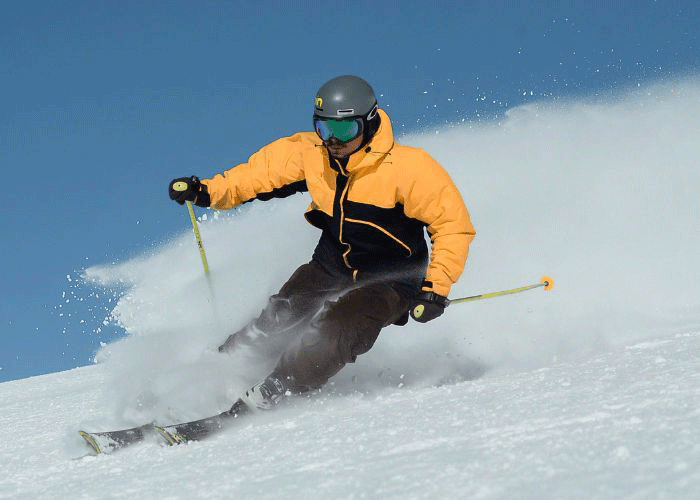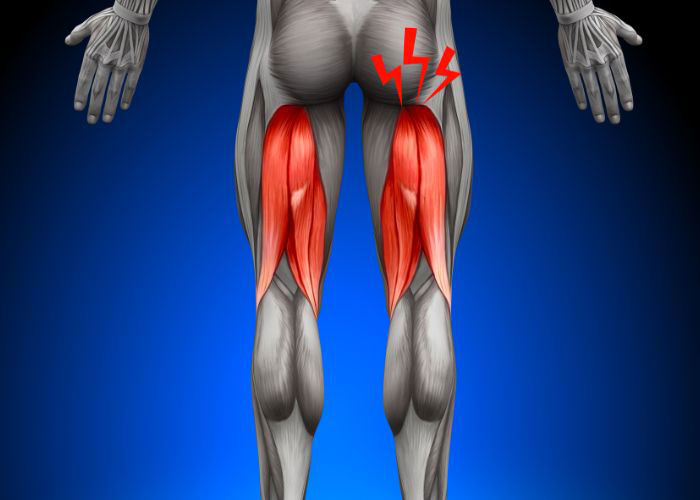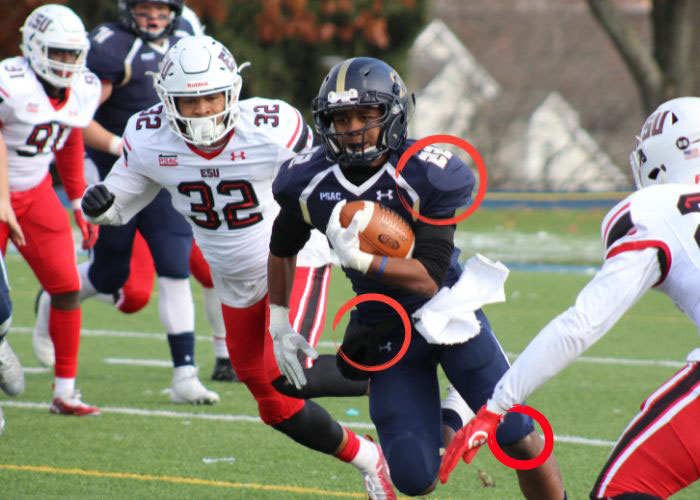What is a rotator cuff injury or tear?
There are four muscle-tendon groups that originate from the scapula (shoulder blade) and travel along the top portion of the shoulder to attach to the humeral head (upper arm bone). These muscles and tendons surrounding the glenohumeral joint form the rotator cuff and are responsible for joint stability as it moves in several directions. The rotator cuff does not provide adequate stability with joint movement and is therefore frequently torn or injured as a result of a traumatic event. A rotator cuff injury or tear is most commonly caused by a sports-related activity, but natural degeneration of the tendons or bracing a fall with an outstretched hand can also result in damage to the rotator cuff. Rotator cuff injuries can be characterized by mild tendon inflammation to the partial or complete severing of the tendons from their attachment site.
What is the treatment for a rotator cuff injury or tear?
Patients with mild rotator cuff injuries or partial tears, are often able to resolve any symptoms with non-surgical therapies alone. Pain and inflammation can be managed with a combination of rest, ice, and non-steroidal anti-inflammatory medications (NSAIDs). When appropriate, a physical rehabilitation program will be tailored to strengthening the muscles and tendons of the rotator cuff.
However, in patients with severe rotator cuff injuries or a full rotator cuff tear; or in the event of failed non-surgical therapies, surgical intervention may be necessary to restore the rotator cuff. Restoration of the rotator cuff is typically completed through a minimally invasive surgical procedure known as a shoulder arthroscopy. The use of a small camera (arthroscope) and surgical tools can reattach the injured tendons. Dr. Ronak Mukesh Patel, orthopedic shoulder doctor, treats patients in Sugar Land, Pearland, and the Houston, Texas area who have experienced a rotator cuff tear and are in need of a surgical rotator cuff repair.
How is a rotator cuff tear repair performed?
Dr. Patel performs an arthroscopic rotator cuff repair by first inserting the small camera (arthroscope) into the shoulder to methodically examine the bones, muscles, ligaments, and tendons of the shoulder joint. Specialized surgical instruments are then introduced into the joint to excise and remove the damaged tendon fragments and the remaining tendons are reattached in the correct anatomical position on the humeral head. This debridement procedure removing the damaged portions of the rotator cuff may be sufficient in successfully repairing any partial rotator cuff tears. Complete rotator cuff tears may require special surgical anchors secured within the bone to properly fasten the tendon back to the head of the humerus. Dr. Patel often performs an advanced surgical technique known as a double-row arthroscopic rotator cuff repair in order to successfully repair rotator cuff tears. Adding an additional row of sutures has been shown to provide additional stability to severely torn tendons while also significantly reducing the risk of another tear with increased stress to the repaired tendon.
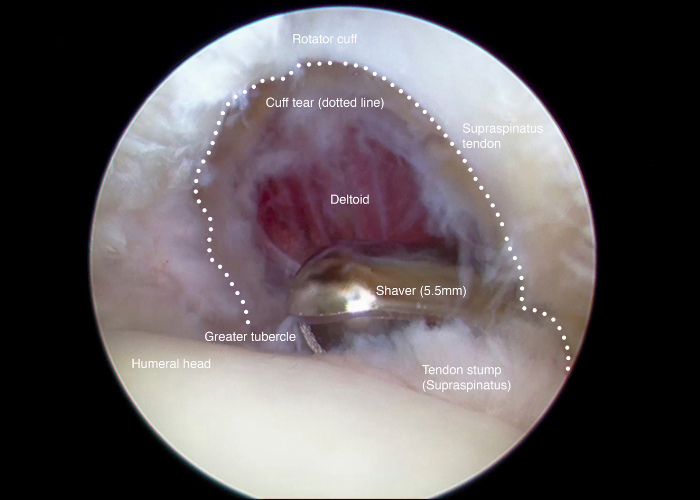
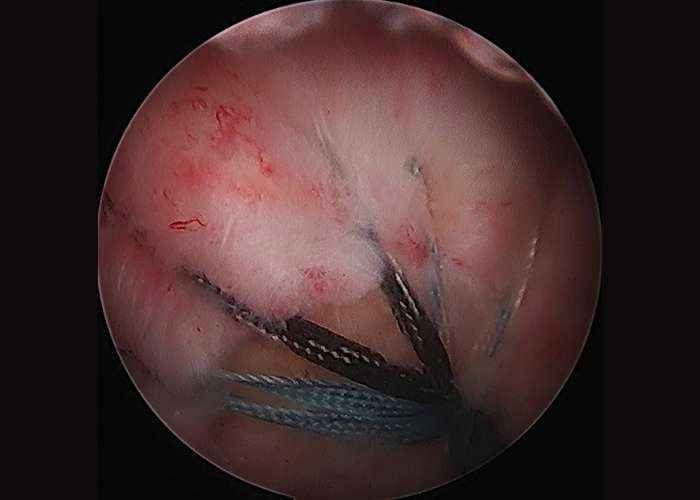
Rotator Cuff Repair with Suture Anchors
What is the recovery period like after a rotator cuff repair?
The recovery period following a successful rotator cuff repair is contingent on the severity of the injury and the complexity of the repair procedure. Most patients can expect a full recovery in approximately 6 months with continued improvement in strength and range of motion of the shoulder for a year or more. Patients in Sugar Land, Pearland, and the Houston, Texas area can typically anticipate the following:
- A sling is applied immediately after surgery to ensure proper healing of the repair tendons by immobilizing the shoulder joint.
- Shoulder movement typically begins 1 week after surgery with passive range of motion exercises and continues for 3 to 6 weeks.
- Approximately 6 weeks after surgery is when the active range of motion exercises generally begin.
- The key to a successful recovery following a rotator cuff repair is active participation and completion of the physical rehabilitation program designed by Dr. Patel. This physical therapy program will focus on strengthening the rotator cuff muscles and tendons and typically begins between 8 and 12 weeks after surgery.
Rotator Cuff Surgeon
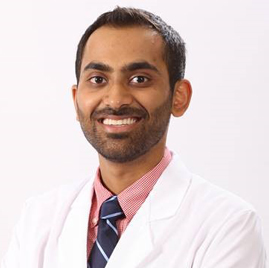
Are you an athlete who experiences shoulder inflammation, pain, and instability? If so, you may have a rotator cuff injury or tear. Rotator cuff injuries can be healed with therapy, but shoulder arthroscopy is recommended for more severe tears. Rotator cuff surgeon, Doctor Ronak Mukesh Patel, is experienced in diagnosing and treating patients in Houston, Sugar Land, and Pearland, TX who sustained a rotator cuff injury. Contact Dr. Patel’s team today!
